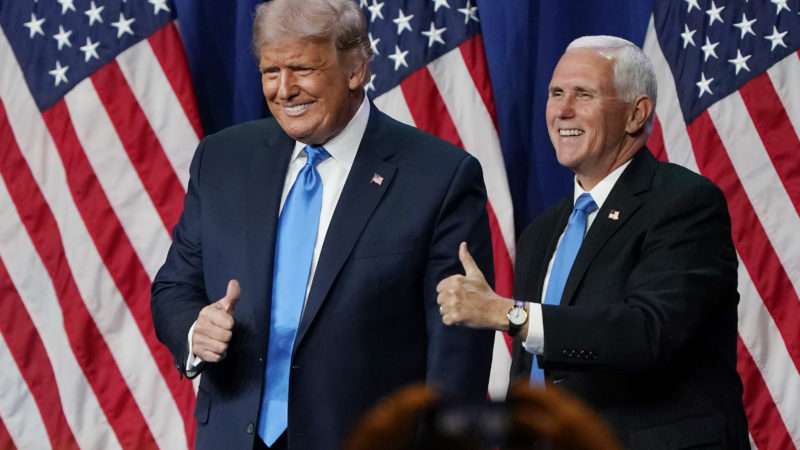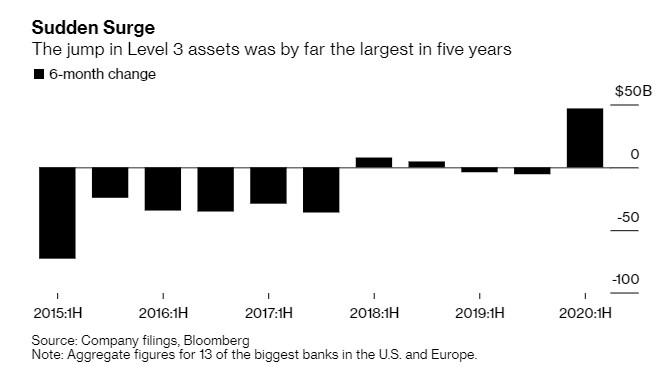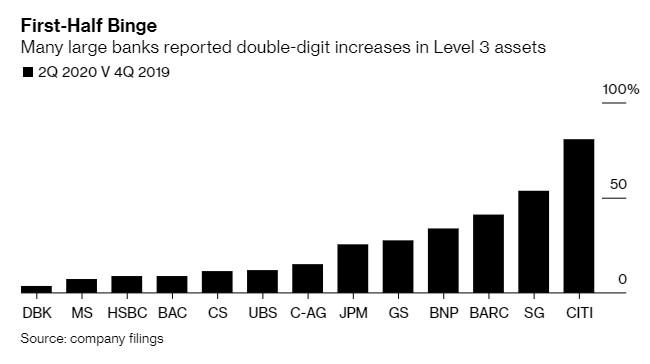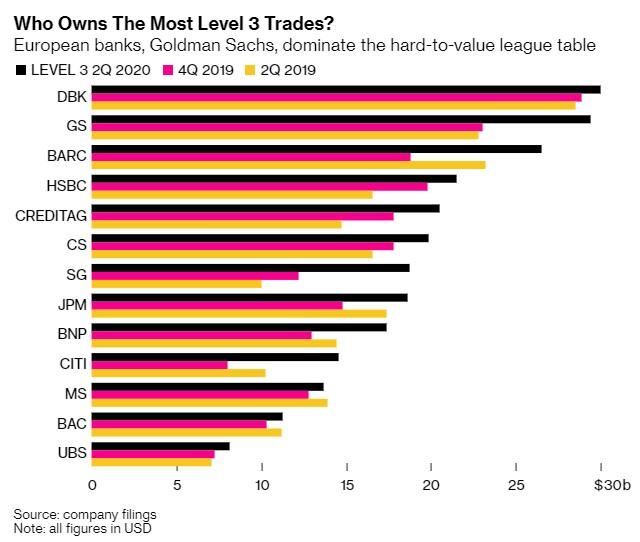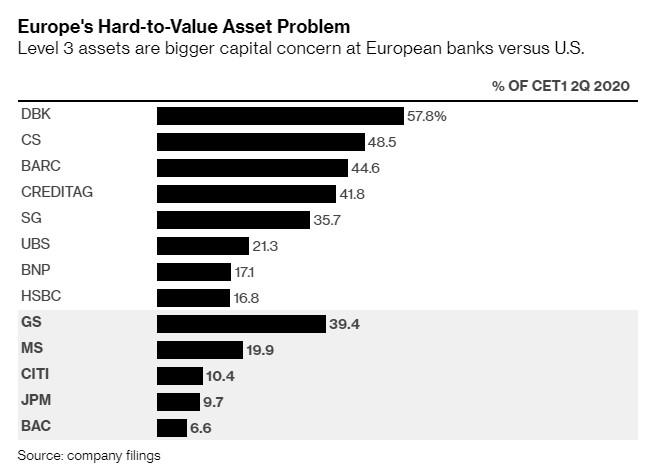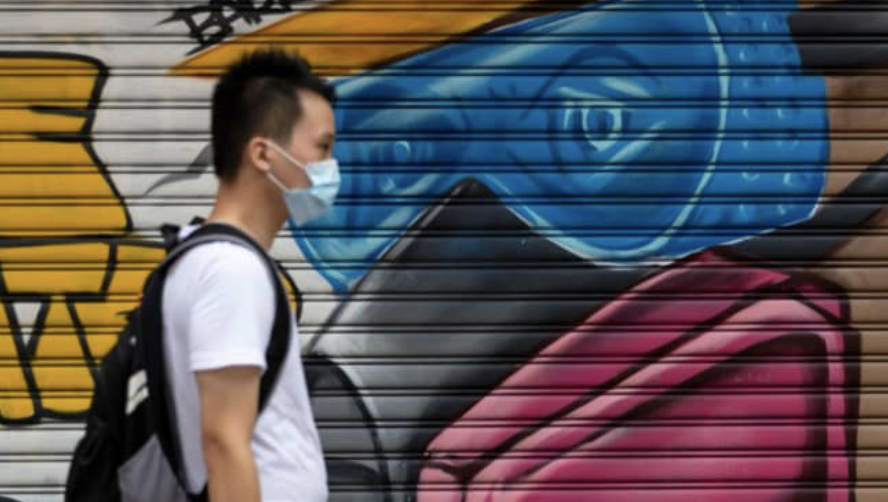In what can be described as Bank of America at its most apocalyptic, the bank’s currency strategist Athansios Vamvakidis takes us on a tour de force of where we’ve been, going through what comes next, and which culminates in what may well be the 9th circle of financial hell.
Starting with the “three red flags” that have recently emerged across global economies, he then explains why nobody cares and why “markets remain optimistic” – the reason is MMT, in case anyone is confused – as “deflation and not inflation is the risk today.” As a result, nothing “prevents more fiscal policy stimulus, funded by more money printing” while “central banks keep policy rates low for as long as necessary, to help governments deal with the massive debts they are accumulating? Effectively, this is what markets are pricing in” as without inflation there is no “budget constraint.”
Yet stocks at all time high does not mean the situation is sustainable: as Vamvakidis writes next “things could have been different if the pandemic had found the global economy with lower debt and higher interest rates” however, that is a pipe dream as “most countries did not take advantage of the good times in the years before to create enough policy space, just because they thought that these years were not “good enough.” In fact, in a complete failure of following Keynesian principles, “macro policies since the late 1990s have been loose in good times and even looser in bad times” as “countries have been converging towards MMT, without even realizing that they do” and the result “is that policies were loose and debt high even before the pandemic.” Covid only accelerated this trend.
So for now the world is cruising on a debt-fueled autopilot, and “as long as there is no inflation, there is no budget constraint, in MMT and in the current state of the world. For as long as the pandemic lasts, fiscal and monetary policies can provide as much support as necessary and even more.” Furthermore, looking ahead in a post-covid world, there will be “no rush to tighten policies, to avoid jeopardizing the recovery, as was also the case in the years following the global financial crisis. After all, Japan has been in this reality for the last 30 years.”
Of course, eventually these loose macro policies, in both a good and a bad state of the global economy, “will likely lead to inflation. The longer it takes the more addicted markets become to macro policy support making the eventual adjustment harder.” And yet, even once central banks announce their intent to overshoot their inflation target – something which will be unveiled in September, “non-linearities may make their task challenging, while in any case markets may start pricing rate hikes and the so-called central bank policy put could weaken.”
Indeed, it is “only low inflation has allowed the I-am-so-bearish-I-am-bullish market in recent years” and is why the Fed will do anything in its power to keep inflation from becoming a budget constraint. However, “if and when at some point we do get inflation, this equilibrium will likely break.”
So is there a way out? Well, with debt set to keep rising, the only option to reduce debt to either pre-Covid levels, or even more to pre-global financial crisis levels “would require massive fiscal austerity and private sector deleveraging”, something which no self-respecting politician will ever campaign on ever again. And why take the plunge: “as long as inflation remains low and central banks keep policy rates at zero, there is no reason for such pain.”
Unfortunately, as even Bank of America admits, “this is a scenario of recurring bubbles.” The real economy is weak, but asset prices are strong because of loose macro policy support-more decoupling between Wall Street and main street. As Vamvakidis writes, “this will continue until unexpected shocks take place, asset price bubbles burst, which then needs even looser macro policies to avoid an even weaker real economy, leading to new asset price bubbles. The result is a vicious cycle spiralling to even higher debt levels, lower interest rates and larger central bank balance sheets, without inflation, but with an even weaker real economy and even worse asset price bubbles.”
And we all have the Fed to thank for this endless loop that eventually ends in absolute disaster.
Of course, these same central banks are all too aware of these “risks” as BofA calls them (or, as the 1% would call them, opportunities), “but they are stuck.” For the reason why just look at recent attempts to tighten, even in small steps, which led to sharp market adjustments: “We can mention many examples, from the Fed’s QE taper tantrum and its sharp U-turn last year cutting rates and expanding its balance sheet despite unemployment being well below the natural rate, to the ECB being stuck with negative rates well after the crisis and despite serious side effects and reintroducing QE last year at effectively full employment. Government debt is already too high in most cases, particularly after the pandemic, to reduce it with fiscal consolidation in the years ahead, without hurting the already weak economy.”
Which brings us to Vamvakidis’ damning conclusion, one which can be summarized simply as enjoy it all while you can because the end-game is coming as “this is not a sustainable situation in the long term:”
We see no easy way out. Again, we wouldn’t start from here. This is not a good place to be in for the global economy and it is getting worse with every shock, despite the market euphoria in the meantime. An already bad situation before the pandemic has now become worse. We are not sure how and when we will see the end-game, but in our view this is not a sustainable situation in the long term.
And that’s all one needs to know about the current trajectory of, well, everything.
* * *
His full must-read note below:
In search of a budget constraint
First, Covid-19 infections continue to increase in Europe in recent weeks, reaching a new re-opening peak last week. We have been concerned that reopening will lead to higher infections, in Europe and everywhere else. The trade-offs between going back to normal and containing Covid-19 are clear to us.
Second, the Eurozone August PMIs dropped, confirming our view that the initial rebound was simply from base effects after the lockdown and that the cleaner data from now on will reflect a weaker recovery and output well below pre-crisis levels. US data has also started weakening, with our economists expecting further slowing this fall.
Third, markets were disappointed by the FOMC minutes last week, just because they were not dovish enough. The minutes told us that Fed policies would be outlook-dependent. However, the consensus was looking for a strong, unconditional dovish message. Effectively, markets are pricing both loose monetary policies and a strong recovery, which we have been arguing is not realistic.
US equities were back to an all-time high last week, with equities in the rest of the world also recovering strongly, before these red flags caused a pause in risk assets. In the meantime, there is no fiscal deal yet in the US, with some benefits already expiring. The bottom line we see is that the real economy remains weak and fragile, while macro policy support has its limits, but markets are optimistic on both fronts.
MMT to the rescue
Even if the real economy is weak and the recovery from the pandemic looks nothing like a V or a U, what prevents fiscal and monetary policies to keep supporting risk assets? By any measure, real output is well below pre-crises levels today and forecasts suggest it will remain so well into next year, if not the year after. And yet, global equities have almost fully recovered. In the meantime, deflation and not inflation is the risk today. What prevents more fiscal policy stimulus, funded by more money printing? And wouldn’t central banks keep policy rates low for as long as necessary, to help governments deal with the massive debts they are accumulating? Effectively, this is what markets are pricing in our view.
And why stop there? Is supporting the economy after a shock from a global pandemic more urgent than addressing rising income inequality or climate change, just to mention two of many other possible examples? Aren’t we implementing Modern Monetary Theory already? What’s the budget constraint?
We wouldn’t start from here
Things could have been different if the pandemic had found the global economy with lower debt and higher interest rates. Most countries did not take advantage of the good times in the years before to create enough policy space, just because they thought that these years were not “good enough.” Macro policies since the late 1990s have been loose in good times and even looser in bad times. Countries have been converging towards MMT, without even realizing that they do. Of course, extraordinary macro policy support is absolutely necessary, in our view, in response to a global pandemic that takes place once in a century. However, the problem is that policies were loose and debt high even before the pandemic.
Inflation could eventually be the budget constraint
As long as there is no inflation, there is no budget constraint, in MMT and in the current state of the world. For as long as the pandemic lasts, fiscal and monetary policies can provide as much support as necessary and even more. Even after the pandemic, we would expect no rush to tighten policies, to avoid jeopardizing the recovery, as was also the case in the years following the global financial crisis. After all, Japan has been in this reality for the last 30 years.
In theory, at some point, loose macro policies, in both a good and a bad state of the global economy, will likely lead to inflation. The longer it takes the more addicted markets become to macro policy support making the eventual adjustment harder. Even if central banks are willing to overshoot their inflation target, non-linearities may make their task challenging, while in any case markets may start pricing rate hikes and the so-called central bank policy put could weaken. Only low inflation has allowed the I-am-so-bearish-I-am-bullish market in recent years. If and when at some point we do get inflation, this equilibrium will likely break.
Recurring bubbles in a lowflation scenario
The obvious pushback is that inflation has been the dog that has not barked in recent decades. It is certainly the least of our concerns today, with output well below potential and our forecasts for a very weak recovery. Markets are also pricing low inflation and low interest rates for the foreseeable future.
However, in a lowflation scenario, debt is likely to remain high in most countries. To reduce debt to pre-Covid levels, and even more to pre-global financial crisis levels, would require massive fiscal austerity and private sector deleveraging. As long as inflation remains low and central banks keep policy rates at zero, there is no reason for such pain.
However, this is a scenario of recurring bubbles. The real economy is weak, but asset prices are strong because of loose macro policy support-more decoupling between Wall Street and main street. This will continue until unexpected shocks take place, asset price bubbles burst, which then needs even looser macro policies to avoid an even weaker real economy, leading to new asset price bubbles. The result is a vicious cycle spiralling to even higher debt levels, lower interest rates and larger central bank balance sheets, without inflation, but with an even weaker real economy and even worse asset price bubbles.
Most likely, this spiral started with low inflation in the 1990s, because of structural forces such as globalization and IT, and the widespread adoption of inflation targeting in the years that followed. Macro policies took advantage of low inflation to loosen too much, and one thing led to another, with a crisis every few years also keeping inflation low.
The end game is not clear, but unlikely to be smooth
Most likely, major central banks and most governments are aware of these risks, but they are stuck. Efforts to tighten in the past, even in small steps, led to sharp market adjustments. We can mention many examples, from the Fed’s QE taper tantrum and its sharp U-turn last year cutting rates and expanding its balance sheet despite unemployment being well below the natural rate, to the ECB being stuck with negative rates well after the crisis and despite serious side effects and reintroducing QE last year at effectively full employment. Government debt is already too high in most cases, particularly after the pandemic, to reduce it with fiscal consolidation in the years ahead, without hurting the already weak economy.
We see no easy way out. Again, we wouldn’t start from here. This is not a good place to be in for the global economy and it is getting worse with every shock, despite the market euphoria in the meantime. An already bad situation before the pandemic has now become worse. We are not sure how and when we will see the end-game, but in our view this is not a sustainable situation in the long term.

